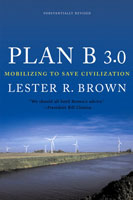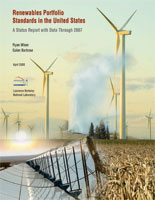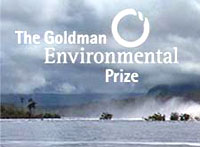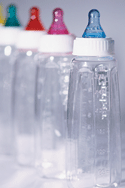
News |
- Manitoba Wildlands Posts 1000th News Item
- Manitoba Plan Supports World Heritage Site
- Oilsands 'Ponds' Cause Death of 500 Ducks
- Emissions Greater than Predicted
- Water Heater Standards Can Equal Energy Savings
- Next IPCC Report 2014 Release
- Polar Bears Listed under COSEWIC
- Renewables Standards - New Electricity Sources
- 2008 Goldman Awards - "The Green Nobel"
- Canadian Greenhouse Gases On the Rise
- Insect and Bee Populations Decline
- Canada To Ban Bisphenol-A
| Manitoba Wildlands Posts 1000th News Item | 13 May 08 |
 Manitoba Wildlands is posting its 1000th news item - and this is it!! Manitoba Wildlands is posting its 1000th news item - and this is it!! Manitoba Wildlands has been posting news items since launch of the website in 2002. News items are compiled from: civil society websites; environmental organizations, First Nations; and media sources. Many are original pieces based on activities and decisions that affect Manitoba lands and waters, especially our boreal forest regions. Like content in the rest of the web site, news items may be about Manitoba, Canada, or international events and decisions. Past news items are searchable by date and category through our 'News Archives Search' tool. Gaile Whelan Enns, director of Manitoba Wildlands told staff, "Your dedication, and expert research and writing means our news items are widely read and distributed. Lets keep on doing what we do well!" This 1000th news item is an opportunity to celebrate - and to thank our visitors for spreading the word about Manitoba Wildlands. View our News Archives Search tool Visit us on Facebook Join one of our themed Newsletter lists Source: Manitoba Wildlands |
|
 Print version Print version |
Top |
| Manitoba Plan Supports World Heritage Site | 08 May 08 |
 The Government of Manitoba released a new climate action plan April 21, 2008. The Government of Manitoba released a new climate action plan April 21, 2008.The new plan, Beyond Kyoto: Manitoba's Green Future, includes several references to the future boreal World Heritage Site (WHS) on Manitoba's east side. The commitment to land use planning that includes land protection and plans for the east side is noted (page 36). Another statement underscores ongoing Manitoba Government support for the WHS nomination (page 47). The new climate action plan also repeats Manitoba's involvement in the WHS nomination process moving forward. "In Manitoba, there are many ongoing activities, including working together with the Government of Ontario and First Nations Communities to sustain one of the largest untouched tracts of boreal forest in North America through a UNESCO World Heritage Site nomination." (Executive Summary, Beyond Kyoto, page 4) Visit Manitoba Government report, Beyond Kyoto: Manitoba's Green Future View WHS reference page 4, Executive Summary Beyond Kyoto (PDF) View WHS reference page 36, Municipalities section Beyond Kyoto (PDF) View WHS reference page 47, Adaptation section Beyond Kyoto (PDF) Source: Government of Manitoba |
|
 Print version Print version |
Top |
| Oilsands 'Ponds' Cause Death of 500 Ducks | 07 May 08 |
 The recent tragic deaths of 500 ducks on April 28th in Syncrude's oilsands wastewater 'pond' represent only a fraction of the yearly death toll due to impacts of the oil industry, according to scientists. The recent tragic deaths of 500 ducks on April 28th in Syncrude's oilsands wastewater 'pond' represent only a fraction of the yearly death toll due to impacts of the oil industry, according to scientists.Experts warn yearly bird death numbers are under-reported and will increase as heavy oil plants continue to be built. "The problem is far more widespread and way more than the 500 birds have perished (this week). Nobody wants to see wildlife wastefully dying that way. We have to come up with a better way to manage and mitigate these hazards ." said Maurice Nadeau, President of the Alberta Fish and Game Association. The flock of 500 mallards landed on a Syncrude Canada Ltd. tailings pond north of Fort McMurray. The ponds hold poisonous wastewater from oilsands production and are situated along a major flyway for migrating waterfowl. Local bird and animal populations are accustom to the sound of cannons used to deter birds landing, and scientists with Boreal Song Bird Initiative said there is a long history of bird deaths in these ponds. Pembina Institute say current tailings ponds for oilsands giants Syncrude, Suncor Energy and Albian Sands Energy Inc. cover 50 square kilometers, a size expected to quadruple if the projects proposed for the province go ahead. View May 2, 2008 Syncrude Canada press release View May 2, 2008 The Star article View May 5, 2008 Canada.com article View April 30, 2008 National Post article View May 3, 2008 Globe and Mail article View May 2, 2008 Globe and Mail article Visit Boreal Songbird Initiative website Sources: Syncrude Canada Ltd., The Star, Canada.com, National Post, Globe and Mail |
|
 Print version Print version |
Top |
| Emissions Greater than Predicted | 07 May 08 |
 A recent Earth Policy Institute report states carbon dioxide (CO2) emissions are currently exceeding the worst-case scenario laid out in 2000 by the Intergovernmental Panel on Climate Change (IPCC). The upper-limit of annual emission growth predicted by IPCC was 2.3 percent between 2000 and 2010 - Earth Policy Institute has reported an actual annual increase of 3.1 percent so far this century. A recent Earth Policy Institute report states carbon dioxide (CO2) emissions are currently exceeding the worst-case scenario laid out in 2000 by the Intergovernmental Panel on Climate Change (IPCC). The upper-limit of annual emission growth predicted by IPCC was 2.3 percent between 2000 and 2010 - Earth Policy Institute has reported an actual annual increase of 3.1 percent so far this century. Carbon dioxide and other greenhouse gases have already raised global average temperature by 0.8 degrees Celsius, with more than two thirds of that increase since 1980. Ice core records indicate there is more CO2 in the atmosphere now than at any point in the last 650,000 years. Rapid industrialization throughout Asia has resulted in CO2 emissions growing five times faster than the rest of the world. India's emissions have tripled since 1981 and China's have more than doubled since 1990. In Plan B 3.0: Mobilizing to Save Civilization, Lester R. Brown outlines a plan with energy efficiency measures, technologies, and programs to protect the world's forests, which could cut net global carbon dioxide emissions 80 percent by 2020. Putting this plan into action would halt and reverse growing carbon dioxide emissions and avoid a trajectory of increased temperatures. View April 9, 2008 Earth Policy article View IPCC Special Emissions Scenarios, 2000 (PDF) View Plan B 3.0: Mobilizing to Save Civilization by Lester R. Brown Sources: IPCC, Earth Policy |
|
 Print version Print version |
Top |
| Water Heater Standards Can Equal Energy Savings | 07 May 08 |
 Water heaters, responsible for 17 percent of residential energy use, went completely unregulated in the United States - until now! Water heaters, responsible for 17 percent of residential energy use, went completely unregulated in the United States - until now!The U.S. Department of Energy announced new ENERGY STAR® criteria for water heaters. Traditional water heaters are the 3rd biggest energy user in homes. The new criteria take effect January 1, 2009 for all five categories of residential water heaters. General Electric has developed a tankless heater that provides hot water only when needed and uses 30 percent less energy per unit water produced. Standard electric water heaters required about 4800 kwh/year; the new GE Hybrid Electric water heater requires 2300 kwh/yr to operate. Under the Energy Efficiency Act Canada plans to set minimum energy performance standard for new products or make existing standards more stringent for: air conditioners, freezers, gas furnaces, dishwashers, etc. Water heater standards in Canada were last updated in 2004 and do not compare to new U.S. standards. View April 2, 2008 Eco Geek article Visit General Electric Appliances - Video Gallery View General Electric Tankless Gas Water Heater product page View April 1, 2008 U.S. Department of Energy press release View Natural Resources Canada - Energy Efficiency Regulations Backgrounder View 2004 Natural Resources Canada - Energy Efficiency Levels for Storage Water Heaters Sources: Eco Geek, GE Appliances, U.S. Department of Energy, Natural Resources Canada |
|
 Print version Print version |
Top |
| Next IPCC Report 2014 Release | 07 May 08 |
 The Intergovernmental Panel on Climate Change (IPCC) held meetings April 9-10, 2008 in Budapest, Hungary to discuss the IPCC's future and key aspects of its work programme for the next several years. The meeting was the first since release of the Fourth Assessment Report November 2007 and brought together governments, lead authors, UN agencies, non-governmental organizations, industry and academia. The Intergovernmental Panel on Climate Change (IPCC) held meetings April 9-10, 2008 in Budapest, Hungary to discuss the IPCC's future and key aspects of its work programme for the next several years. The meeting was the first since release of the Fourth Assessment Report November 2007 and brought together governments, lead authors, UN agencies, non-governmental organizations, industry and academia.The IPCC agreed to prepare a Fifth Assessment Report (AR5) and to retain the current Working Groups. To enable use of new scenarios in the AR5, the Panel requested delivery of Working Group 1 report by early 2013 and completion of other Working Group reports and the Synthesis Report at the earliest feasible date in 2014. The Panel also adopted the Technical Paper on Climate Change and Water and agreed to prepare a Special Report on Renewable Energy, by 2010. The next IPCC session is in Geneva, Switzerland, 1-4 September 2008. View IISD's 28th Session of Intergovernmental Panel on Climate Change View IISD's Earth Negotiations Summary of 28th Session of Intergovernmental Panel on Climate Change View IPCC's webpage on 28th Session of Intergovernmental Panel on Climate Change Source: IISD |
|
 Print version Print version |
Top |
| Polar Bears Listed under COSEWIC | 29 April 08 |
 Canada's Committee on the Status of Endangered Wildlife in Canada (COSEWIC) delivered their recommendations to the federal government on whether the polar bear should be considered for protection. The last COSEWIC status review for the poplar bear, in 2002, assessed the polar bear as a species of 'Special Concern', meaning that it "may" become a threatened or an endangered species. Canada's Committee on the Status of Endangered Wildlife in Canada (COSEWIC) delivered their recommendations to the federal government on whether the polar bear should be considered for protection. The last COSEWIC status review for the poplar bear, in 2002, assessed the polar bear as a species of 'Special Concern', meaning that it "may" become a threatened or an endangered species.The 2008 COSEWIC recommendation is to continue 'Special Concern' status for the polar bear. WWF Canada urged the government to list the polar bear as 'Threatened' due to devastating affects of global warming, rapidly shrinking sea-ice habitat, and industrial development pressures as oil exploration disturbs large tracts of habitat. Due to concerns for survival of the polar bear as sea ice continues to melt, it is listed as 'Vulnerable' on the World Conservation Union (IUNC) 'Red List' of Threatened Species and 'Threatened' on the US Endangered Species Act. Manitoba lists the polar bear as 'Threatened' under The Endangered Species Act (ESA). Of 19 Arctic polar bear populations, 13 live either wholly or partially in Canada. 'Special Concern' status under COSEWIC requires the federal government to draw up a management plan, but would not require the government to do anything about climate change. View April 20, 2008 Canadian Press article View April 21, 2008 WWF Canada article and Fact Sheet View April 25, 2008 CBC article View January 18, 2008 CBC In Depth Climate Change - Polar Bears Backgrounder View 2007 IUCN/PBSG Report, Melting Under Pressure: the real scope on climate warming and polar bears (PDF) Sources: Canadian Press, WWF-Canada, CBC, Wildlife Journal |
|
 Print version Print version |
Top |
| Renewables Standards - New Electricity Sources | 29 April 08 |
 A growing number of American states are supporting renewable electricity like solar and wind power by mandating renewable portfolio standards (RPS), including in legislation with definitions, targets and deadlines. Currently 25 states and Washington D.C. have RPS and almost 50% of U.S. electricity boards has some kind of RPS in place. A growing number of American states are supporting renewable electricity like solar and wind power by mandating renewable portfolio standards (RPS), including in legislation with definitions, targets and deadlines. Currently 25 states and Washington D.C. have RPS and almost 50% of U.S. electricity boards has some kind of RPS in place.A new report, Renewable Portfolio Standards in the United States: A Status Report with Data through 2007, released by the U.S. Department of Energy's Lawrence Berkeley National Laboratory, provides a comprehensive overview of state RPS policies. The report found over 50% of new renewable energy capacity from 1998 through 2007 occurred in states with RPS policies, and 93% of these additions came from wind power. Imports of hydro generated electricity, like Manitoba exports, are not included in the definition of renewable energy found in most RPS mandates. Manitoba itself does not yet have an RPS system for its wind, solar, biomas energy programs. View April 2008 U.S. Report Renewables Portfolio Standards in the United States: A Status Report with Data through 2007 (PDF) View April 2008 U.S. Report Summary Presentation (PDF) View April 22, 2008 Renewable Energy World article View April 14, 2008 Science Daily article View April 24, 2008 Environmental Protection article Sources: Lawrence Berkeley National Laboratory, Renewable Energy World, U.S. Department of Energy, Science Daily, Environmental Protection |
|
 Print version Print version |
Top |
| 2008 Goldman Awards - "The Green Nobel" | 29 April 08 |
 Grassroots environmental leaders from the six continents have been awarded the Goldman Environmental Award for 2008. Grassroots environmental leaders from the six continents have been awarded the Goldman Environmental Award for 2008.Marina Rikhvanova, from Russia, works to protect Siberia's Lake Baikal, the world's oldest and deepest lake. The Russian government planned to build a billion-dollar pipeline through the lake basin to supply Siberian crude to China and Japan. As a result of Rikhvanova''s campaign President Putin ordered the pipeline routed away from the lake''s watershed. Ignace Schops, from Belgium, campaigned for more than ten years to establish the country''s first and only national park. His activism and unique partnerships with government, industry and local stakeholders have protected the 5000 ha woodland area. The national park serves as a model for land conservation in Europe and beyond. The Goldman Prize, often called "the green Nobel", has been awarded to 126 environmental heroes over the past 19 years. Sophia Rabliauskas of Poplar River First Nation, Manitoba, Canada was awarded the prestigious prize in 2007 for her efforts to secure permanent protection of two million acres of undisturbed boreal forest. View April 13, 2008 Goldman Environmental Prize Press Release View April 17, 2008 Planet Ark Interview View Pacific Environment article View Goldman Environmental Prize - Ignace Schops - Belguim View April 13, 2008 Goldman Prize press release Visit Hoge Kempen National Park website Sources: Goldman Environmental Prize, Planet Ark, Pacific Environment, IUNC, Hoge Kempen National Park |
|
 Print version Print version |
Top |
| Canadian Greenhouse Gases On the Rise | 29 April 08 |
 Statistics Canada has released its 2007-2008 Human Activity and the Environment, which highlights human influence on climate change in Canada. The report shows Canada is among the highest per capita greenhouse gas (GHG) emitters in the world. Statistics Canada has released its 2007-2008 Human Activity and the Environment, which highlights human influence on climate change in Canada. The report shows Canada is among the highest per capita greenhouse gas (GHG) emitters in the world.In 2005 just over 23 tonnes of GHGs were emitted for each person in Canada, comparable the United States at 24.4 tonnes. Canada has about 0.5 percent of the world's population, but contributes 2 percent of the total global GHG emissions. GHG emissions rose 25 percent between 1990 and 2005. Investments in new environmental processes and technologies reduced GHGs per unit of economic activity by 18 percent during this 15-year period. However, in 2008, producers intend to invest $19.7 billion in the Alberta oil sands. In 2005 energy production and consumption accounted for 80 percent of emissions in Canada. Since 1990 Canada's GHG emissions from production of exported energy have jumped 146%. In 2005, Canadians released an astonishing 747 megatonnes of carbon dioxide into the atmosphere. View April 22, 2008 Exchange Magazine article View April 22, 2008 CBC article View April 22, 2008 Statistics Canada Report, Human Activity and the Environment: Annual Statistics 2007 and 2008 Sources: CBC, Statistics Canada, Exchange Magazine |
|
 Print version Print version |
Top |
| Insect and Bee Populations Decline | 29 April 08 |
 Research into the unprecedented decline of insects and bee populations has been linked to pollution and mobile phones. Bees and insects are an essential agent of pollination for plants. Without them agriculture would be impossible. Research into the unprecedented decline of insects and bee populations has been linked to pollution and mobile phones. Bees and insects are an essential agent of pollination for plants. Without them agriculture would be impossible.Research funded by the US National Science Foundation found that ozone and nitrate radicals from car exhausts are dulling floral aromas and disrupting insect life. Scent molecules are volatile and quickly bond with pollutants, chemically altering them to no longer smell like flowers. "Scent molecules produced by flowers in a less polluted environment travel for roughly 1,000 to 1,200 metres. But today they may travel only 200 to 300 metres. This makes it increasingly difficult for bees and other insects to locate flowers," said Professor Jose Fuentes, who led the study. Honey bee populations are declining rapidly in the United States, Britain and across much of the globe. 2.5 million honey bee colonies in America have been lost to Colony Collapse Disorder (CCD). Albert Einstein once said that if the bees disappeared, "man would have only four years of life left". According to the British Beekeepers' Association (BBKA) honey bees could disappear completely from Britain by 2018. View April 20, 2008 Common Dreams article View April 20, 2008 Daily Mail article View April 11, 2008 Science Daily article View April 23, 2008 The Independent article View March 1, 2008 The Independent article Sources: Common Dreams, Daily Mail, Science Daily, The Independent |
|
 Print version Print version |
Top |
| Canada To Ban Bisphenol-A | 23 April 08 |
 Canada has taken an international lead in announcing bisphenol-A, a substance found in polycarbonate plastics, as toxic. Health Minister Tony Clement proposes a ban of polycarbonate baby bottles based on increased health concerns. Canada has taken an international lead in announcing bisphenol-A, a substance found in polycarbonate plastics, as toxic. Health Minister Tony Clement proposes a ban of polycarbonate baby bottles based on increased health concerns.Bisphenol-A or BPA, one of the most widely used synthetic chemicals, will be listed under the Canadian Environmental Protection Act. A 60 day public comment period to determine whether to ban polycarbonate baby bottles containing BPA will be followed by a two-year process that could result in a partial or complete ban of BPA used for beverage and food containers. BPA is able to mimic the female hormone estrogen and is linked to cancer, declining sperm counts and early puberty in girls.. Exposure to the chemical through polycarbonate baby bottles and the linings of infant formula cans, while small, places them at possible risk of developmental or neurological problems. Retailers across Canada are responding to overwhelming consumer rejection of the product. View April 19, 2008 Canada Gazette Part I (PDF) View April 16, 2008 New York Times article View April 18, 2008 Globe and Mail article View April 19, 2008 Tree Hugger article Visit Government of Canada's Chemical Substances Web site View April 18, 2008 Health Canada news release View April 23, 2008 Common Dreams article Sources: Canada Gazette, New York Times, The Globe and Mail, Tree Hugger, Government of Canada |
|
 Print version Print version |
Top |


 RSS Feeds:
RSS Feeds: